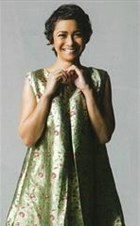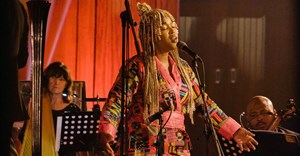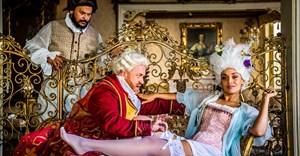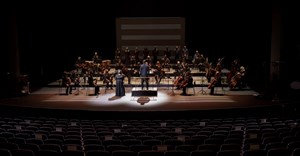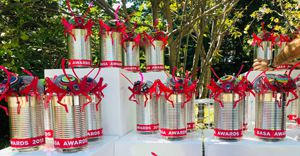Trending
[Design Indaba 2015] The language of William Kentridge
The work is comprised of vocalists, a dancer, an actor and various instrumentalists; it showcased a multi-media experience that takes viewers through the many themes and background of William Kentridge's work. We are presented with a steamcraft looking instrument, so vague yet so absorbing, with its various moving parts one doesn't know what sound to expect next or what instrument it is emitting. This is followed by the performers who will come to transfix us for the next eighty minutes - an elfin looking vocalist with the ability to produce the most minuscule yet shrilling sounds that travel down spines paired with a vocalist who has a voluminous sound that filled our ears with her rich voice.
![[Design Indaba 2015] The language of William Kentridge](https://biz-file.com/c/1503/262527.jpg)
There is a petite dancer with a feline like quality who manages to contort her body with ease alongside an actor donning a fez that brought about a virile presence and stark voice that forces one to sit up straight. Lastly the musical team of percussionist, violinist, trombonist, pianist, a tubist and the musical conductor who manages to string it all together and carry the entire performance. The performers in unison have a marching band presence and are quite strange with their anachronistic quality; it is hard to predict what comes next throughout the performance as Kentridge is constantly jumping from science to Greek philosophy and ultimately the question of time.
As most of Kentridge's works are centred on the idea of time and memory, this work is no different; he constantly prompts the audience to question the notion of an "appropriate" time, the worth and speed of an image and the ever fixed journey of making mistakes. It is not only a performance but a sinister yet soothing lecture about the question of time and truth. The performers chant "truth is beauty and beauty is truth" in a mantra like quality and you begin to realise that this is not just a one sided performance that Kentridge created in order to showcase the inner mechanisms of one of Africa's greatest artists but it is an invitation to the audience to revise their own existential crisis. The performance quickly begins to resemble a mad hatter house and we're a congregation of Alice's going down a rabbit hole.
![[Design Indaba 2015] The language of William Kentridge](https://biz-file.com/c/1503/262525.jpg)
Joanna Dudley, a classically trained musician and Javanese pop sensation from London most notably twists, screws and warps her voice - she encompasses an uncomfortable beauty that leaves you perplexed. Joanna coupled with Ann Masina, a well-known Gospel artist, produces a ying yang quality that is well suited to the subject matter as Masina has a warm, soulful voice that ricochets. Dada Masilo, the aforementioned dancer started collaborating with Kentridge about four years ago, when he began working on "Refuse the Hour". She moves about with unpredictable nuances and uses a combination of ballet and contemporary to explain the voices in Kentridge's head. A medium found throughout the performance are sculptures consisting of metal cones, megaphones and metronomes, symbols used to reiterate theme, Masilo manipulates and controls these sculptures to mirror her dance in a magnetic manner.
A theme that is evident throughout the work is the concept of a dark abyss, or as he refers to it during the performance a full stop. He explains the idea as a single black dot/hole/mark that could represent an end to a sentence or a dark black hole into which everything disappears - it begs the question of whether or not everything lives on in this "black hole" or ends with the "full stop". He begins one of his acts with the words "Self-portraits as a coffee pot" and embodies this notion as seen in his methods - the process of repeating and layering ideas on top of each other that are sent into this "black hole" along with himself as the dark coffee pot. Kentridge also brings forth the poignant concept of an image and the speed in which it travels which he says is the same speed of light, being 186,000 miles per second, the idea that an image never dies but instead moves rapidly and comes full circle much like the speed of light travelling around the earth.
This subject works in unison with the haunting imagery found in the backdrop, we see everything from Dada Masilo prancing around in a room in garments reminiscent of the Dadaism era to Kentridge and his twin self repeating mistakes to bolts of light that looks like it was produced by a pin hole camera. He presents the concept of an image as a visual trope that is never fixed but instead constantly scattered, moving and being recreated, this concept is evident in his own drawing technique as he tends to juxtapose his themes and layer his imagery on top of each other in a disseminated manner.
The caricature like quality of the work is as unkempt as the artist's head; it almost has a disco ball effect in the sense that there are so many moving parts that feeds both the eyes and ears. The performers coupled with Kentridge's notions of science and philosophy breeds a time capsule that transports audiences through his thought process as an artist. Kentridge's strangeness and charm is so evident in his work and the audience is lucky enough to catch a glimpse of the workings of a mastermind. As it all comes to end, the moving parts culminate in a plethora of visual and audio alchemy as the audience reaches the full stop of its voyage into the mind and soul of the great William Kentridge. "Refuse the hour" brings forth the question of whether or not we know if we're ever truly on time for anything, what hour is suitable to any given occasion and ultimately whether this time is being decided by us or left to the world to decide it for us.












